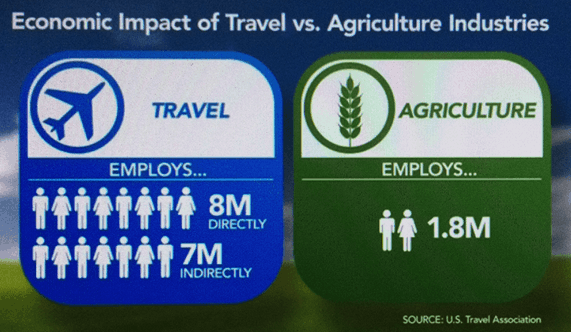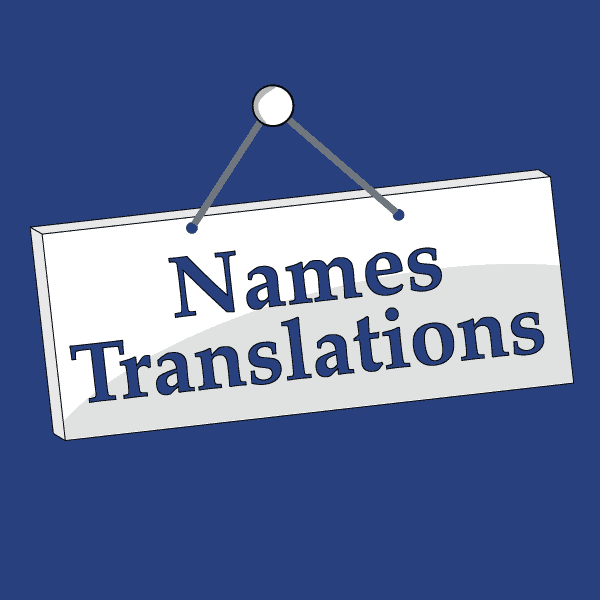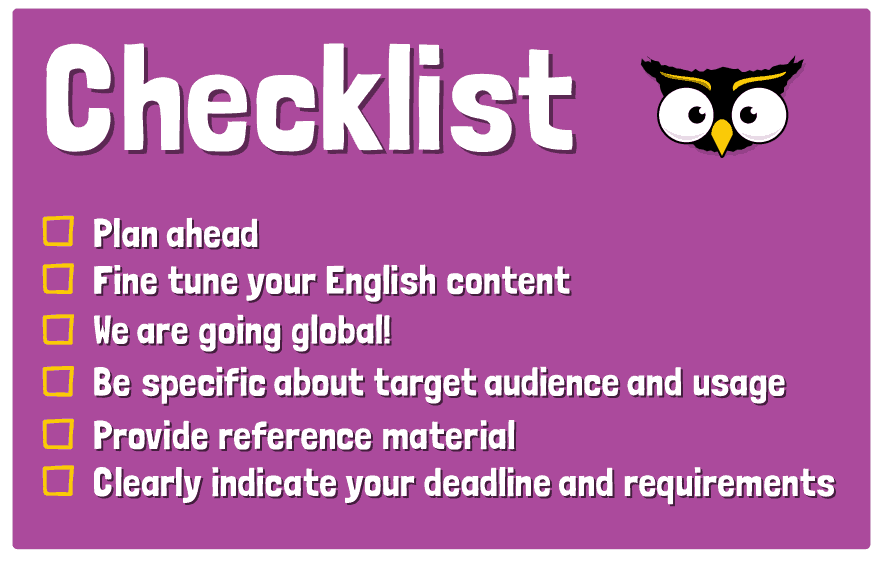
Fashion is a universal language. No matter where you go in the world, you’ll find nicely dressed people. From high-end designer labels to off-the-rack clothes at a department store, everyone needs clothes. However, the universal necessity for clothes does not mean that the fashion industry is exempt from needing to speak their audience’s language. In fact, textile translations are an incredibly important piece of the puzzle for the global fashion industry.
What is Fashion Translation?
Fashion translation services entail translating written materials from a source language to a target language with content related to the fashion industry. Fashion translation must preserve the copy’s intended meaning and keep the brand’s style and tone cohesive while accounting for cultural differences between target markets.
These translation services touch all types of fashion documents, including business-to-business (B2B) communications with industry-specific terms and business-to-consumer (B2C) communication with ads, marketing, social media, and more.
The Need for Fashion Translation Services
The fashion industry worldwide is worth trillions of dollars, and it continues to grow every year. This growth is due to the increasing connectedness of the world and the ease with which customers can buy clothes internationally. Once, clothes were made locally and tailored to fit exact dimensions. But today, people can shop for collections and brands from the comfort of their couch with just a few clicks, without ever needing to step foot in a dressing room.
The fashion supply chain is also global and necessitates communicating in many languages. Brands must be able to coordinate new lines with designers in France or Italy, pick textiles in Brazil, and communicate deadlines with factories in China. Creating the hottest new look of the fall (or summer) without fashion translations would be nearly impossible!
The Challenges of Fashion Translations
Specialized Vocabulary
Fashion brands use technical terms that aren’t common in everyday life to describe fabrics, shapes, designs, cuts, and colors. From choosing the type of textile for a garment (chiffon, velvet, polyester, or rayon) to describing the fit of a garment (A-line, straight leg, halter cut, etc.), a fashion translator must understand the nuances and terms of the fashion industry.
Not all translators don’t know this specialized vocabulary; a professional fashion translator has industry experience and is soaked in the terms, nuances, and complex vocab of the fashion world. The language of fashion is inherently multi-lingual; English designers use French or Italian terms to describe garments. A skilled translator knows what terms to translate and when it is crucial in fashion translations.
Localization of Fashion Terms
Localization is also necessary because of the differences in fashion from country to country. Australian clothing lovers know exactly what a “jumper” is, while the term may confuse English speakers from the United States. The same term can also mean different things in different countries that speak the same language, like the difference between “pants” in the US (meaning trousers) and underwear in the United Kingdom (meaning underwear).
Sizing differs from country to country as well. While many brands use length and hip sizing for men’s pants, women’s are more arbitrarily sized, and the chart changes from country to country. The same is true for bras, shoes, and belts too.
The nuances in fashion brands between countries necessitate localization. Localization goes beyond translation, considering the cultural differences in sizing, terms, and people’s attitudes toward fashion.
Localization Services is extremely important for the fashion driven content.
Fashion is Culturally Specific
Fashion is about personal style and connection, but it also speaks to specific periods of time. Entire decades are defined by the fashion industry, like the bell bottoms of the 1970s, the shoulder pads of the 1980s, and the grunge trend of the 1990s. These trends are often culturally specific and may mean different things in different countries – look at the cowboy boots trend in Milan this year.
This cultural specificity means fashion companies must tread carefully across cultural lines. Brands and historical context inform trends that must be carefully considered during translation. There is no one-size-fits-all approach for a global fashion brand, even when rolling out the same new pieces in different markets.
What Do Fashion Brands Need to Translate?
Fashion companies seeking out international markets must translate a variety of fashion-related content. Here’s what that includes.
Website Copy
Every brand seeking international appeal must have a multi-lingual website. Website translation services is crucial for the Fashion and cosmetic industry.
While fashion is heavily driven by visual images and videos, having translated copy is essential for capturing interested audiences. While English is a dominant language on the internet, customers still refuse to buy from brands that don’t speak their local language. Offering multiple versions of your website is an easy way to appeal to customers by respecting their linguistic differences and making it easy for them to buy from you. Multi-lingual website copy can also help increase your ranking in the search engines if you prioritize multi-lingual SEO.
This translation must also include each country’s proper sizing, measurement system, currency, and checkout process.
Descriptions
From e-commerce stores to print catalogs, fashion companies must translate and localize their product descriptions. Customers want to know what a garment is made of, how it feels, and how it will fit. Product descriptions are an opportunity for descriptive sales copy that makes your audience imagine themselves in new clothing – don’t skimp on translating your product description in your online store or catalogs.
Ads and Marketing Materials
Billboards, print mailers, emails, social media posts, press releases – the list of fashion content that a haute couture brand must use is prolonged.
Don’t leave money on the table by only offering ads in one language. Your ads should be localized for each target audience to speak directly to their wants, needs, and desires. A billboard in Hong Kong may not translate literally to one in San Paolo, but it should evoke the same emotion and call to action.
Clothing Labels
Every piece of clothing comes with a small label that includes the textile makeup of the garment, the size, and how to launder it. This label should offer a translated copy for each significant audience your fashion brand is targeting. This translation does not need to be extensive, but a customer in France shouldn’t have to Google how to clean their new blouse because the instructions are only offered in English and Spanish. Many brands will include one line per language on these tags. Think about Zara. Their long tags indicate how this brand cares for its customers worldwide.
Recently, I found a tag wrongly translated into Spanish. When I went around the store, all the garments had the same wrong Spanish translation. As a Spanish speaker, that brand lost points in my book of brands. They did not bother to review the tags before mass-producing them!
Supply Chain Communications
Today’s fashion companies must cross country borders and close linguistic barriers to communicate across the supply chain effectively. Much of the manufacturing for new garments takes place in Asia, while design work and customers can live anywhere. This supply chain communication necessitates translation services for written communication and fashion interpretation services for Zoom meetings and stakeholder phone calls.
Interpretation: Increasing the Reach of Fashion Brands
Fashion is not limited to New York, Paris, and Milan catwalks. In our interconnected world, fashion is in every city and every life. From Portugal to Brazil and Indonesia, people worldwide seek to express themselves through clothing and apparel, and it’s never been easier to get style inspiration or new clothes. So, if your brand isn’t speaking to an international audience, you’re leaving money on the table.
Clothes are designed in Europe, manufactured in Asia, and shipped around the world to eager customers. So not only is it important to speak the language of the end customer, but it is also crucial for fashion brands to speak the language of the supply chain, which crosses borders and transcends cultural lines. Interpretation services help bridge the language gap for verbal communication. Whether you need to connect with a supplier in Asia, a designer in Milan, or offer phone support for customers worldwide, interpretation services make communication easy, no matter the language.
If you need language services for your fashion brand, look no further than JR Language Translation Agency. Our team of professional translators have years of experience working in the industry and make adding translated copy to your brand simple. We pride ourselves on going the extra mile to provide high-quality translated content at affordable prices and within appropriate turnaround times. Reach out for a free quote today – we’d love to hear about your fashion-translated project.




